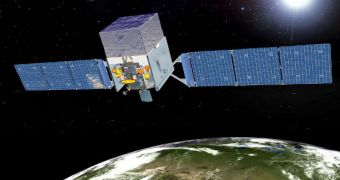The latest data supplied by the NASA Gamma-Ray Large Area Space Telescope are helping experts gain a deeper insight into the nature of the most energetic form of light in the Universe – gamma-rays. Although launched less than 4 years ago, the satellite has already produced invaluable information.
Gamma-rays cannot be readily studied from Earth's surface, due to the fact that the atmosphere is blocking out much of the radiations' energy. As such, experts decided to use orbital observatories. Fermi was launched to study the high-energy sky on June 11, 2008.
Since then, it has been able to detect a large number of extremely short gamma-ray bursts, clearing out some of the mysteries associated with these events. At the same time, digging deeper into the issue led to the emergence of new, more complex questions, which Fermi is struggling to answer as well.
Though sensitive to the highest-energy portion of the gamma-ray burst emission spectrum, Fermi cannot detect all bursts. Some of the blasts last for several seconds, while others for as much as 20 minutes. Experts estimate that for every event Fermi sees, about 500 go unnoticed.
According to the Pennsylvania State University (PSU) Eberly Chair Professor of Astronomy and Astrophysics, Péter Mészáros, GRB mostly occur when the core of a massive star, at least 25 times heavier than the Sun, collapses in on itself, and forms a black hole.
The atmospheric shells surrounding the collapsing core are ejected in a violent supernova explosion. “The black hole is rotating rapidly and as it is swallowing the matter from the star, the rotation ejects a jet of material through the supernova envelope,” Mészáros explains.
He presented the data in a conference held on February 18, at the annual meeting of the American Association for the Advancement of Science (AAAS 2012) in Vancouver, British Columbia, Canada.
Perhaps the most important contribution Fermi has brought thus far is that it managed to help astrophysicists test which theories about the origins and properties of gamma-rays were correct, and which were entirely false or misleading.
“We have been able to rule out the simplest version of theories which combine quantum mechanics with gravity, although others remain to be tested,” Mészáros says. At least now, experts will be able to focus their attention on fewer explanations, which have a higher chance of panning out.
The telescope is currently working at nearly the limits of capabilities. Even so, there are some things it cannot readily establish. “Fermi has done much better in measuring how close to the speed of light the jet gets,” the Penn State expert says.
“But we still don't know if it is 99.9995 percent the speed of light or 99.99995 percent the speed of light,” he concludes.

 14 DAY TRIAL //
14 DAY TRIAL //